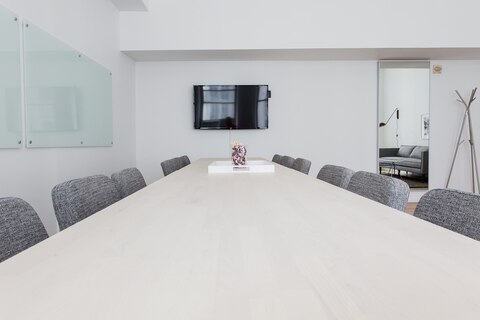The Impact of Office Design on Employee Productivity: A Scientific Approach

Office design significantly influences employee productivity. Modern research confirms that a well-planned work environment can enhance efficiency, satisfaction, and even employee health. In this article, we will explore the scientific aspects of how office design impacts employee productivity and provide recommendations for optimizing the workspace.
1. Ergonomics and Comfort
Ergonomic Furniture
Ergonomic desks, chairs, and monitors help reduce physical strain and minimize the risk of health issues such as back and neck pain. Studies show that ergonomic workstations can increase productivity by 15-20%.
Sit-Stand Workstations
Sit-stand workstations help reduce fatigue and improve overall well-being. Research indicates that employees who use sit-stand desks are more active and productive.
2. Natural Lighting
Windows and Skylights
Natural lighting positively affects mood and productivity. Studies reveal that offices with ample natural light can boost productivity by 10-25%.
LED Lighting
LED lights that mimic natural light can enhance comfort and productivity in offices without access to natural light.
3. Space Planning
Open Spaces
Open office spaces encourage better communication and collaboration among employees. However, it's important to provide areas for privacy and concentration to avoid overload and decreased productivity.
Breakout and Relaxation Areas
Breakout areas where employees can relax and take breaks help reduce stress levels and increase overall productivity.
4. Acoustics
Soundproofing
High noise levels can negatively impact concentration and productivity. Using soundproofing materials and creating acoustic zones can help mitigate noise effects.
Background Noise
Some studies suggest that a moderate level of background noise (such as nature sounds or white noise) can enhance concentration and creativity.
5. Color and Design
Color Choice
Interior colors can affect mood and productivity. For example, blue and green colors promote concentration and calm, while yellow stimulates creativity.
Interior Design
Aesthetically pleasing office design enhances employee satisfaction with the work environment, which in turn positively impacts productivity.
6. Biophilia and Nature
Office Plants
Having plants in the office improves air quality and creates a pleasant atmosphere. Research shows that employees in offices with plants feel less stressed and more productive.
Natural Materials
Using natural materials like wood and stone creates a warm and cozy atmosphere, positively affecting employee mood and productivity.
Conclusion
A scientific approach to office design helps create optimal working conditions, enhancing productivity and employee satisfaction. Considering ergonomics, natural lighting, space planning, acoustics, colors, and biophilic elements helps create a comfortable and efficient work environment. Investing in high-quality office design is an investment in the success of your business.

